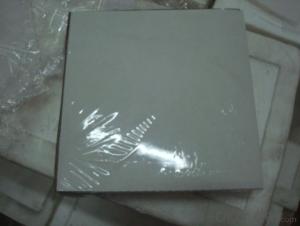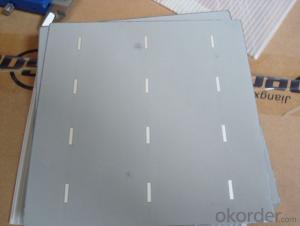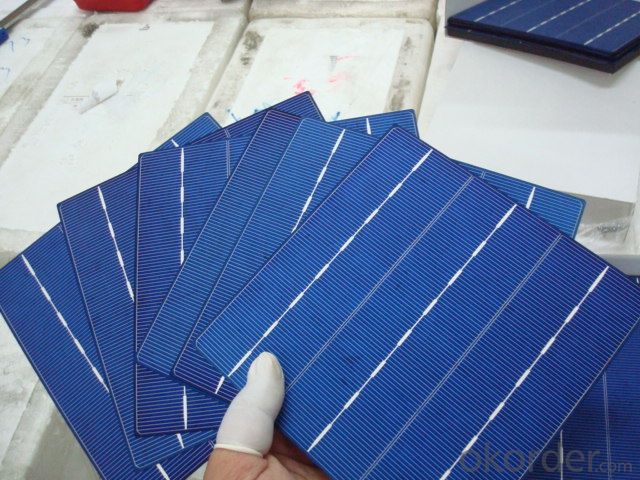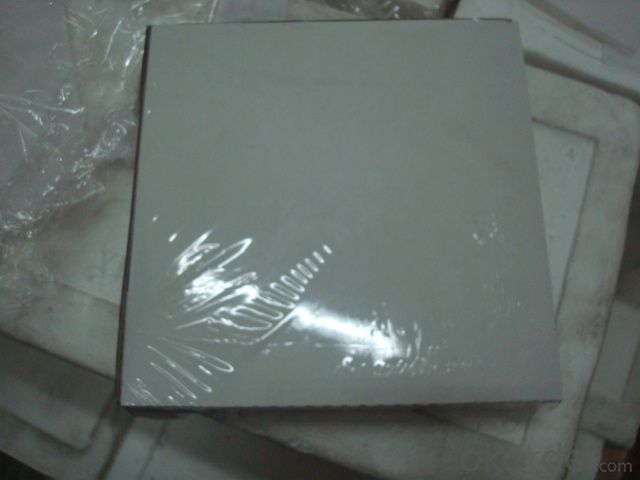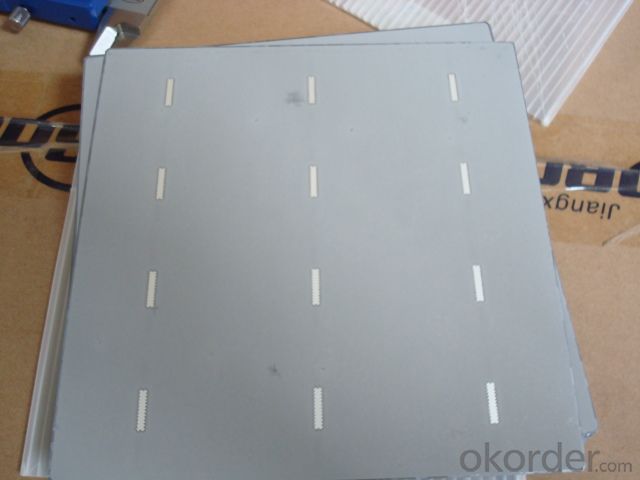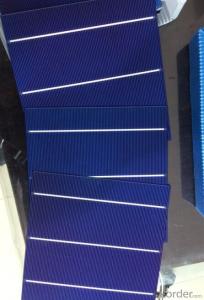Polycrystalline Solar Cells-Tire 1 Manufacturer -16.6%
- Loading Port:
- Shanghai
- Payment Terms:
- TT OR LC
- Min Order Qty:
- 10000 pc
- Supply Capability:
- 50000000 pc/month
OKorder Service Pledge
OKorder Financial Service
You Might Also Like
Brief Introduction of Solar Cells
A solar cell is a fabricated device that converts the sun’s light into electricity. If we want to get right into it, a solar cell takes the energy from the sun’s light rays, by using the colliding light at the photon level to split apart the electron-hole pairs. When the photon hits the pair, they break, and one part goes north one part south. The stronger the sun, the quicker and more this happens. This process is called the photoelectric effect. The following diagram explains.
Specifications of Polycrystalline Solar Cells
Format : 156 mm × 156 mm ± 0.5 mm
Thickness: 210 μm ±40 μm
Front (-) : 1.5mm bus bars (silver),blue anti-reflection coating (silicon nitride)
Back (+) : 2.5mm wide soldering pads (silver) back surface field (aluminium)
Efficiency (%) | Pmpp (W) | Umpp (V) | Impp (A) | Voc (V) | Isc (A) |
18.00% | 4.38 | 0.528 | 8.291 | 0.631 | 8.869 |
17.80% | 4.33 | 0.525 | 8.252 | 0.629 | 8.821 |
17.60% | 4.29 | 0.532 | 8.053 | 0.633 | 8.541 |
17.40% | 4.23 | 0.528 | 8.092 | 0.624 | 8.632 |
17.20% | 4.19 | 0.524 | 7.992 | 0.62 | 8.458 |
17.00% | 4.14 | 0.52 | 7.972 | 0.623 | 8.5 |
Advantage of Polycrystalline Solar Cells
High conversion efficiencies resulting in superior power output performance.
Suitable for keeping appearance of solar cell tidy and clean.
Advanced diffusion technology adapted to ensure conversion efficiency uniformity throughout cell.
Advanced PECVD film forming technology used to coat cells with dark blue silicon nitride anti-reflection coatings.
Uniform color appearance.
Advanced soft line and high precision silkscreen printing equipment to achieve high smoothness, make automatic welding and laser cutting easier.
Metal paste applied to making back surface field and electrode to ensure top conductivity, nice adhesion, superior weld-ability, nice appearance and reliable performance.
Efficiency, stability and durability of crystal silicon.
Low breakage rate.
Environmental protection.
OEM orders are welcome
Usage of Polycrystalline Solar Cells
Solar cells are often electrically connected and encapsulated as a module. Photovoltaic modules often have a sheet of glass on the front (sun up) side, allowing light to pass while protecting the semiconductor wafers from abrasion and impact due to wind-driven debris, rain, hail, etc. Solar cells are also usually connected in series in modules, creating an additive voltage. Connecting cells in parallel will yield a higher current; our solar cells have passed IEC Certification. With high and stable quality, our cells can greatly improve the performance of Solar Modules.
Applications of Polycrystalline Solar Cells
Assemblies of photovoltaic cells are used to make solar modules which generate electrical power from sunlight, as distinguished from a "solar module" or "solar panel". A solar array generates solar power using solar energy.
Packaging & Delivery of Polycrystalline Solar Cells
Carton Box Package and Deliver by air. It should be noticed that it should be avoid of water, sunshine and moist.
Factory Picture of Solar Cells

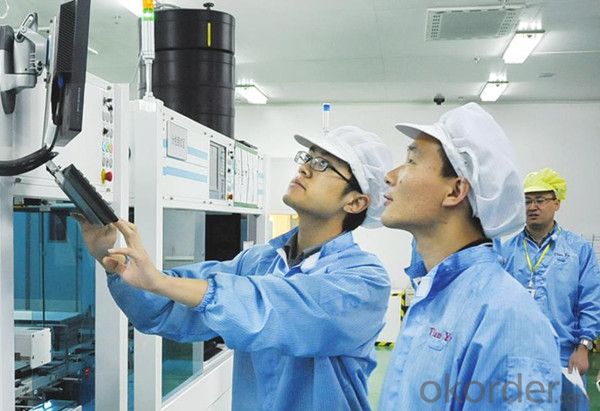
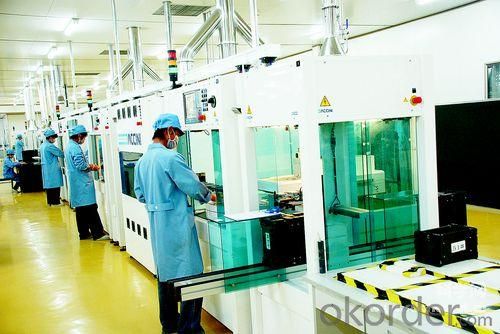
We have organized several common questions for our clients,may help you sincerely:
1. What’s price per watt?
A: It’s depends on the quantity, delivery date and payment terms of the order. We can talk further about the detail price issue. Our products is high quality with lower price level.
2. Can you tell me the parameter of your solar cells?
We have different series of cells with different power output, both from c-si to a-si. Please take our specification sheet for your reference.
3. How do you pack your products?
We have rich experience on how to pack the panels to make sure the safety on shipment when it arrives at the destination.
4. Can you do OEM for us?
Yes, we can.
5. How long can we receive the product after purchase?
In the purchase of product within three working days, We will arrange the factory delivery as soon as possible. The perfect time of receiving is related to the state and position of customers. Commonly 7 to 10 working days can be served.
- Q:How do solar cells handle bird droppings or other debris?
- Solar cells can be affected by bird droppings or debris as they can block sunlight from reaching the cells, reducing their efficiency. Regular cleaning and maintenance are essential to ensure optimal performance of solar cells and prevent any potential issues caused by bird droppings or debris.
- Q:Can solar cells be used for powering transportation infrastructure?
- Yes, solar cells can be used for powering transportation infrastructure. Solar-powered electric vehicles (EVs) are becoming increasingly popular, utilizing solar panels to charge their batteries and power their engines. Additionally, solar-powered charging stations can be installed along roads, highways, and parking lots to provide renewable energy for electric vehicles. These advancements in solar technology contribute to a more sustainable and environmentally friendly transportation system.
- Q:How long does it take for solar cells to pay for themselves?
- The payback period for solar cells typically ranges from 5 to 10 years, depending on various factors such as the initial cost, energy consumption, and local solar incentives.
- Q:Can solar cells be used in telecommunications?
- Yes, solar cells can be used in telecommunications. They can provide a reliable and sustainable source of power for telecommunication equipment, especially in remote or off-grid areas where access to electricity may be limited. Solar cells can be utilized to charge batteries or directly power telecommunication systems, ensuring continuous operation and reducing reliance on traditional energy sources.
- Q:What is the role of disconnect switches in solar cell systems?
- Disconnect switches in solar cell systems serve as a crucial safety measure by providing a means to isolate the solar panels from the electrical grid. They allow for the safe maintenance, repair, or replacement of solar components without the risk of electrical shock or damage. Additionally, disconnect switches enable efficient troubleshooting and troubleshooting of solar systems by allowing technicians to isolate specific sections of the system for inspection or repair.
- Q:What is the effect of shading on solar cell performance?
- Shading has a significant negative effect on solar cell performance as it reduces the amount of sunlight reaching the cell, leading to decreased energy production. Even a small shaded area can cause a significant drop in efficiency, as solar cells are interconnected and operate in series. The shaded portion acts as a barrier, limiting the flow of current and reducing overall power output. Therefore, it is crucial to minimize shading to maximize the performance and efficiency of solar cells.
- Q:Can solar cells be used to power an entire household?
- Yes, solar cells can be used to power an entire household. With advancements in solar technology and proper installation, a solar power system can generate enough electricity to meet the energy needs of a household, especially when combined with energy storage solutions. However, the feasibility and effectiveness of using solar cells to power an entire household depend on various factors such as the size of the solar system, energy consumption patterns, geographic location, and available sunlight.
- Q:Where can I buy the 156x156mm high efficiency poly solar cells assembly?
- It is not difficult to buy the 156x156mm high efficiency poly solar cells assembly,but the only concern would be the quality.
- Q:Can solar cells be used on windows?
- Yes, solar cells can be used on windows. Photovoltaic (PV) technology allows solar cells to be integrated into windows, transforming them into transparent solar panels. These solar windows can generate electricity from sunlight while still maintaining the functionality of a regular window. They are being increasingly used in buildings to harness solar energy and contribute to sustainable energy solutions.
- Q:Can solar cells be used in hybrid systems?
- Yes, solar cells can be used in hybrid systems. Hybrid systems combine different sources of energy, such as solar, wind, or fossil fuels, to generate electricity. Solar cells can be integrated into these systems to harness solar energy and contribute to the overall power generation. This allows for a more sustainable and efficient energy production, reducing reliance on traditional energy sources.
1. Manufacturer Overview |
|
|---|---|
| Location | |
| Year Established | |
| Annual Output Value | |
| Main Markets | |
| Company Certifications | |
2. Manufacturer Certificates |
|
|---|---|
| a) Certification Name | |
| Range | |
| Reference | |
| Validity Period | |
3. Manufacturer Capability |
|
|---|---|
| a)Trade Capacity | |
| Nearest Port | |
| Export Percentage | |
| No.of Employees in Trade Department | |
| Language Spoken: | |
| b)Factory Information | |
| Factory Size: | |
| No. of Production Lines | |
| Contract Manufacturing | |
| Product Price Range | |
Send your message to us
Polycrystalline Solar Cells-Tire 1 Manufacturer -16.6%
- Loading Port:
- Shanghai
- Payment Terms:
- TT OR LC
- Min Order Qty:
- 10000 pc
- Supply Capability:
- 50000000 pc/month
OKorder Service Pledge
OKorder Financial Service
Similar products
New products
Hot products
Hot Searches
Related keywords

